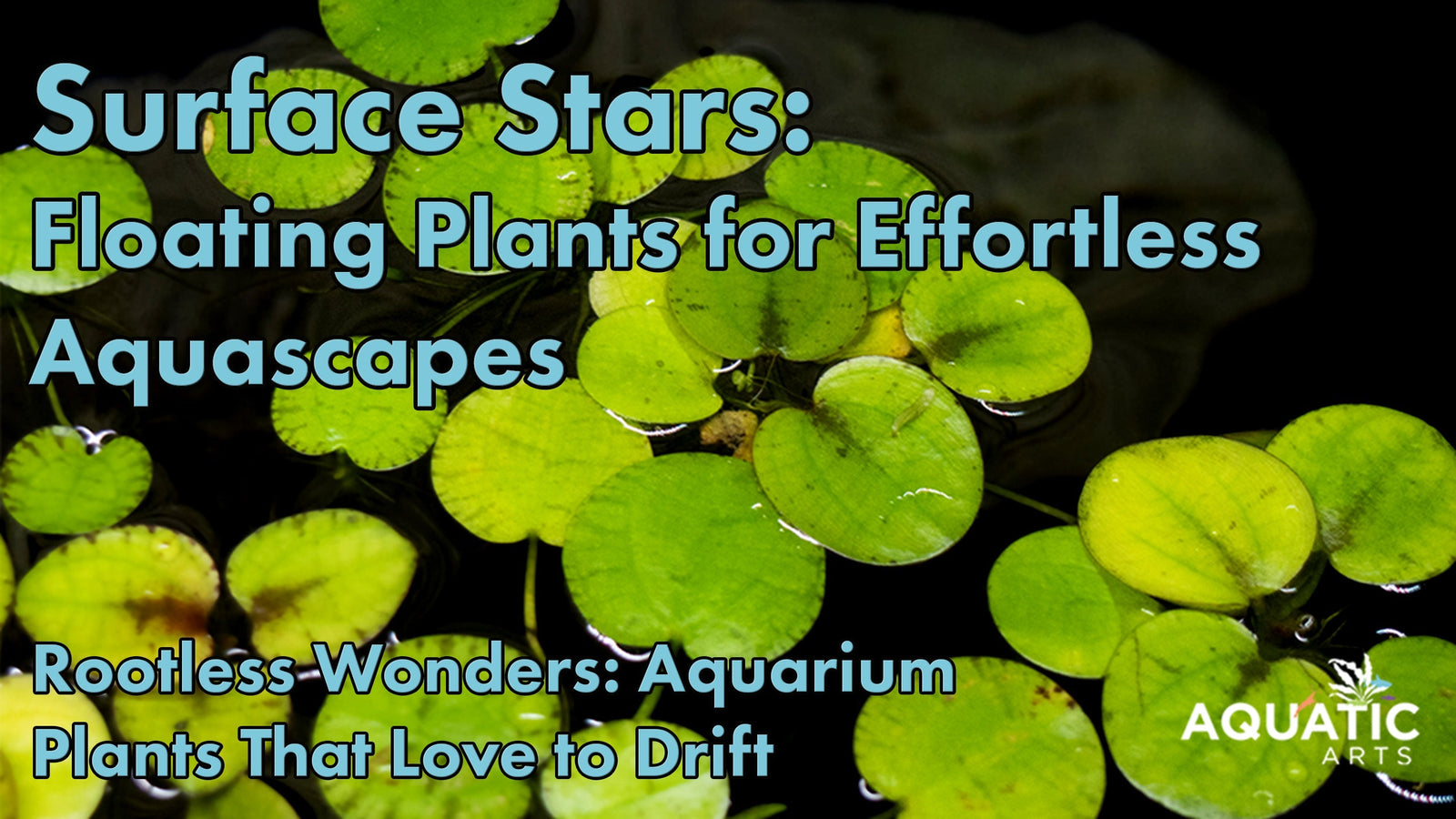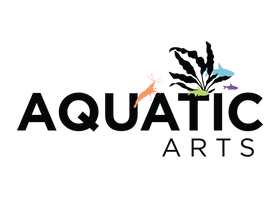Floating Favorites: Aquarium Plants That Don’t Need Anchoring

Let Your Plants Float Free: Easy, Elegant Options for Shrimp Tanks, Community Setups, and Low-Tech Aquascapes
Some plants like to keep their roots in the ground. Others? They’d rather float.
Floating aquarium plants are one of the easiest and most rewarding ways to add greenery to your tank—no planting required. Just place them on the surface and let them go to work. From filtering light to absorbing excess nutrients, these soil-free wonders bring form and function in equal measure.
Whether you’re setting up a breeding tank, managing algae, or just want to create that peaceful, jungle canopy vibe, floating plants can transform your aquarium almost overnight.

American Frogbit drifts gracefully across the water’s surface, its broad leaves and trailing roots casting gentle shade and a calm, serene mood.
Why Go with Floaters?
Floating plants offer a number of benefits that make them appealing to both new and experienced aquarists:
-
No planting or anchoring required – Just add and adjust.
-
Softens light for shy species – Great for tetras, gouramis, bettas, and shrimp.
-
Reduces algae growth – Competes for nutrients and shades the lower levels.
-
Absorbs ammonia, nitrates, and other waste – A natural aid to water quality.
-
Perfect for fry and shrimp – Provides cover, grazing zones, and biofilm surfaces.
Because they aren’t rooted in substrate, floating plants also grow quickly—especially in tanks with fish waste as a nutrient source. That makes them ideal for low-tech setups, where speed and simplicity are key.

A living tapestry of greens — Water Spangles, Fairy Fern, and Duckweed weave together across the surface, creating a tranquil, ever-changing garden that shifts with the light and flow.
Top Floating Plants to Try
Here are a few of the most beginner-friendly and visually interesting floating plants available to aquarists:
Salvinia minima (Water Spangles)
Soft, velvety leaves that form dense mats over time. Doesn’t tangle as much as duckweed and grows fast under moderate light. Shrimp and small fish love hiding beneath it.
Amazon Frogbit
Large, lily-like leaves with long trailing roots. Frogbit creates a classic floating canopy look and adds visual drama. Great for betta tanks and tanks with gentle flow.
Red Root Floater (Phyllanthus fluitans)
A standout among floaters for its reddish undersides and vibrant color under strong lighting. Slower growing than others, but a showstopper in the right setup.
Hornwort (Ceratophyllum demersum)
Technically a stem plant, but often used floating. Fast-growing, oxygenating, and great for absorbing waste. Can be anchored or left free-floating. Excellent for breeding tanks.
Duckweed
Tiny, fast-growing, and... divisive. While some aquarists love the natural look and surface coverage, others find it messy and hard to control. If you use it, be prepared to scoop!

Up close, the velvety pads of Water Spangles reveal a texture like a cat’s tongue—tiny spikes that add both charm and function to this floating gem.
How to Use Floating Plants Effectively
Floating plants may be simple to add, but using them well requires a little balance. Too many can block out all light; too few may not give you the coverage or nitrate control you're after.
Here are a few tips to get the most out of your floating plant layer:
-
Start small – Let your plants multiply naturally before covering the whole surface.
-
Watch the light – Trim or thin regularly to ensure enough light reaches lower plants.
-
Maintain good circulation – Use sponge filters, spray bars, or gentle air stones to keep surface scum from forming.
-
Be shrimp-smart – Floating roots become prime feeding zones for biofilm and microfauna—especially helpful for baby shrimp.
You can also use floating plant rings or barriers to confine them to one part of the tank, especially in setups with open-top lighting or surface feeders.

Beneath the surface, Red Root Floaters glow as the aquarium light filters through, their vibrant roots swaying like living threads in the water’s gentle current.
Aesthetic Bonus: That Wild, Natural Look
There’s something serene and organic about a tank with a soft ceiling of green. The way light filters through floating roots, the gentle movement on the surface—these plants add depth and life without taking over your aquascape.
In shrimp tanks or blackwater-style aquariums, floating plants help complete the picture, making the habitat feel more like a shaded stream or slow-moving jungle pool. Combined with botanicals, driftwood, and subtle flow, they create a natural ecosystem vibe that’s hard to replicate with rooted plants alone.
Final Thoughts
Floating plants are proof that low effort doesn’t have to mean low impact. With just a few clippings or a small starter portion, you can transform your tank’s surface into a living filter, a protective canopy, and a beautiful visual layer—all without touching the substrate.
They’re a great option for anyone keeping shrimp, nano fish, or even just looking to reduce algae and increase balance. No planting. No anchoring. No stress. Just float and flourish.
Q&A: Common Questions About Floating Aquarium Plants
Do floating plants need special lighting?
Not usually. Most floating plants thrive under standard LED aquarium lights. However, some species—like Red Root Floater—develop better color and shape under higher light levels.
Can floating plants grow in low-tech tanks?
Yes. In fact, they’re ideal for low-tech setups. They pull nutrients from fish waste and don’t require CO₂ or root tabs.
Will floating plants help with algae?
Yes. By absorbing excess nutrients and shading the water column, floating plants often reduce the conditions that lead to algae outbreaks.
Do I need to fertilize floating plants?
Occasionally, yes—especially in lightly stocked tanks. A good all-in-one liquid fertilizer can support healthy growth and deeper coloration.
How do I keep floating plants from blocking light?
Trim or thin them regularly, and use floating plant rings to concentrate them in specific areas.
Are floating plants safe for shrimp and fry?
Absolutely. They’re one of the best additions for breeding tanks and shrimp colonies, offering both shelter and food via biofilm.
Can I use floaters in a tank with surface-feeding fish?
Yes, but you may want to clear open spaces or use rings to allow feeding access.
Which floating plant grows the fastest?
Duckweed and Salvinia are both very fast growers. Hornwort, if left floating, also grows quickly and can fill a tank in just a few weeks.
How do I remove floating plants if they spread too much?
Use a fine net, plastic cup, or even a spoon to scoop them out. For Duckweed especially, regular control is key.
Can I combine floating plants with mounted or soil-free hardscape plants?
Yes! They work beautifully together. Floating plants above and mounted ferns or Anubias below create depth and variety in a no-soil aquascape.
Let me know if you'd like this formatted for your blog or newsletter layout, or if you'd like to dive into the third article in the series: The Epiphyte Edge: Ferns, Mosses, and Anubias That Love to Cling.




